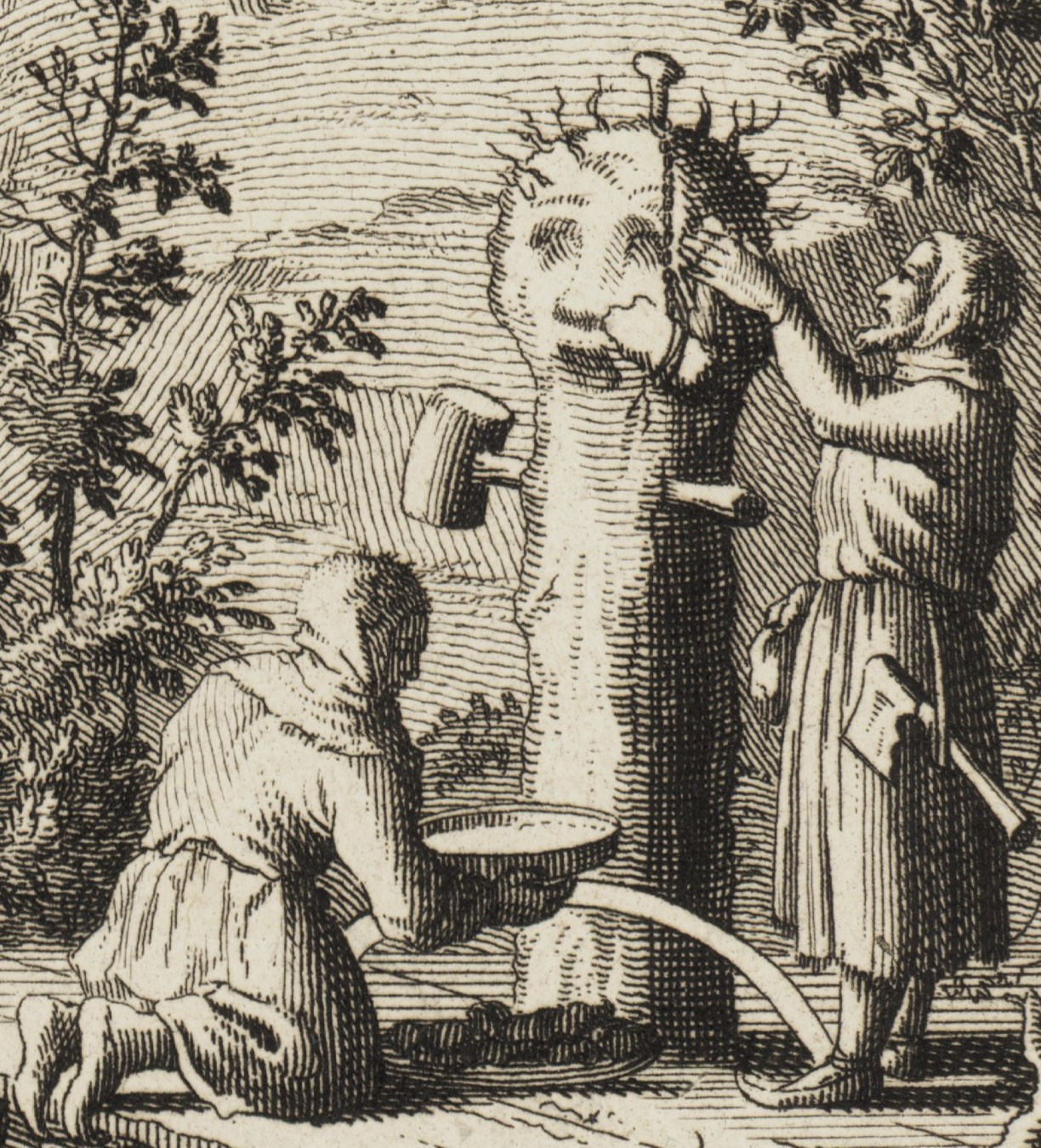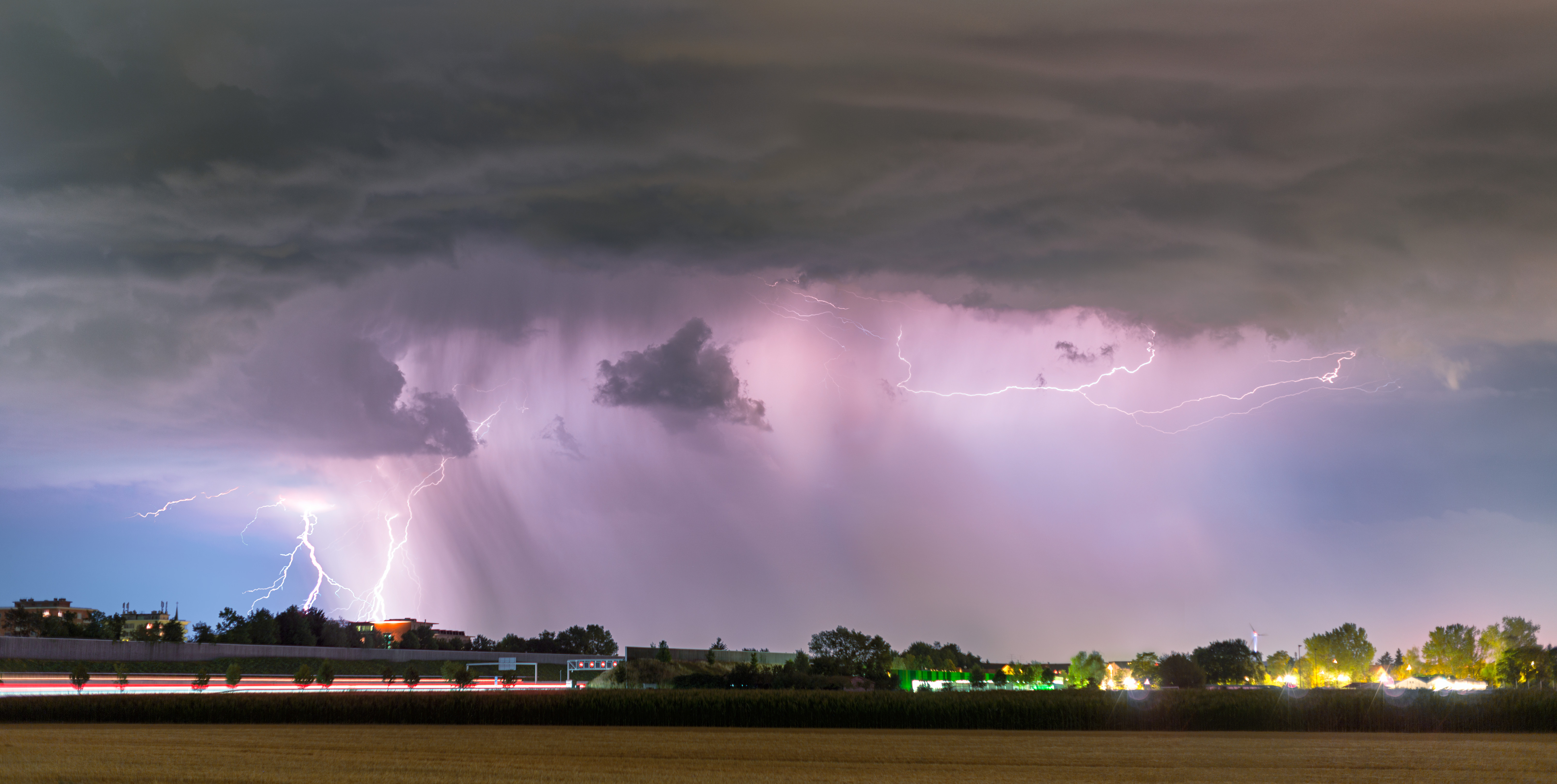|
Horagalles
In Sami shamanism, Horagalles, also written Hora Galles and Thora Galles and often equated with Tiermes or ''Aijeke'' (i.e. "grandfather or great grandfather"), is the thunder god. He is depicted as a wooden figure with a nail in the head and with a hammer, or occasionally on shaman drums, two hammers. It has been suggested that name is derived from that of the Norse god Thor. Characteristics and functions Idols of Horagalles are made of wood and have a nail or spike and a piece of flint in the head.Kaarle Krohn, "Lappische Beiträge zur germanischen Mythologie," ''Finnisch-Ugrische Forschungen'' 6 (1906) 155–80p. 164 He has a hammer called Wetschera, Aijeke Wetschera,Scheffer, cited in Castrén,p. 50Johannes Schefferus, ''Lappland'', tr. Henrik Sundin, ed. John Granlund, Bengt Löw, and John Bernström, Acta Lapponica 8, Stockholm: Gebers, 1956, OCLC 468993787p. 130 or Ajeke veċċera, "grandfather's hammer."Jens Andreas Friis, ''Lappisk Mythologi, Eventyr og Folkesagn'', ... [...More Info...] [...Related Items...] OR: [Wikipedia] [Google] [Baidu] |
Thunder Gods
Polytheistic peoples from many cultures have postulated a thunder god, the personification or source of the forces of thunder and lightning; a lightning god does not have a typical depiction, and will vary based on the culture. In Indo-European cultures, the thunder god is frequently known as the chief or King of the Gods, e.g. Indra in Hinduism, Zeus in Greek mythology, and Perun in ancient Slavic religion. Thunder gods Mediterranean * God in Abrahamic religions * Teshub (Hurrian mythology) * Adad, Bel, Ishkur, Marduk ( Babylonian-Assyrian mythology) * Baʿal, Hadad ( Canaanite and Phoenician mythology) * Set (Egyptian mythology) * Aplu (Hurrian mythology) * Tarḫunna (Hittite mythology) * Tarḫunz (Luwian mythology) *Vahagn (Armenian Mythology) *Zibelthiurdos (Thracian mythology) * Zeus (Greek Mythology) * Jupiter (Roman Mythology) * Northwestern Eurasia * Armazi (god) Georgian Mythology * Afi ( Abkhaz Mythology) * Ambisagrus, Loucetios (Gaulish mythology) * ... [...More Info...] [...Related Items...] OR: [Wikipedia] [Google] [Baidu] |
Rowan
The rowans ( or ) or mountain-ashes are shrubs or trees in the genus ''Sorbus ''Sorbus'' is a genus of over 100 species of trees and shrubs in the rose family, Rosaceae. Species of ''Sorbus'' (''s.l.'') are commonly known as whitebeam, rowan ( mountain-ash) and service tree. The exact number of species is disputed depe ...'' of the rose family, Rosaceae. They are native throughout the cool temperate regions of the Northern Hemisphere, with the highest species diversity in the Himalaya, southern Tibet and parts of western China, where numerous apomictic microspecies occur.Rushforth, K. (1999). ''Trees of Britain and Europe''. Collins . The name ''rowan'' was originally applied to the species ''Sorbus aucuparia'' and is also used for other species in ''Sorbus'' subgenus ''Sorbus''. Formerly, when a wider variety of fruits were commonly eaten in Europe and North America, ''Sorbus'' was a domestically used fruit throughout these regions. It is still used in some countries, ... [...More Info...] [...Related Items...] OR: [Wikipedia] [Google] [Baidu] |
Einar Haugen
Einar Ingvald Haugen (; April 19, 1906 – June 20, 1994) was an American linguist, writer, and professor at University of Wisconsin–Madison and Harvard University. Biography Haugen was born in Sioux City, Iowa, to Norwegian immigrants from the village of Oppdal in Trøndelag, Norway. When he was a young child, the family moved back to Oppdal for a few years, but then returned to the United States. He attended Morningside College in Sioux City but transferred to St. Olaf College to study with Ole Edvart Rølvaag. He earned his B.A. in 1928 and immediately went on to graduate studies in Scandinavian languages under professor George T. Flom at the University of Illinois at Urbana-Champaign, where he was awarded the Ph.D. in 1931. In 1931 Haugen joined the faculty of the University of Wisconsin–Madison, where he stayed until 1962. He was made Victor S. Thomas Professor of Scandinavian and Linguistics at Harvard University in 1964, and stayed here until his retirement in 19 ... [...More Info...] [...Related Items...] OR: [Wikipedia] [Google] [Baidu] |
Sámi Gods
The Sámi ( ; also spelled Sami or Saami) are a Finno-Ugric-speaking people inhabiting the region of Sápmi (formerly known as Lapland), which today encompasses large northern parts of Norway, Sweden, Finland, and of the Murmansk Oblast, Russia, most of the Kola Peninsula in particular. The Sámi have historically been known in English as Lapps or Laplanders, but these terms are regarded as offensive by the Sámi, who prefer the area's name in their own languages, e.g. Northern Sámi . Their traditional languages are the Sámi languages, which are classified as a branch of the Uralic language family. Traditionally, the Sámi have pursued a variety of livelihoods, including coastal fishing, fur trapping, and sheep herding. Their best-known means of livelihood is semi-nomadic reindeer herding. about 10% of the Sámi were connected to reindeer herding, which provides them with meat, fur, and transportation; around 2,800 Sámi people were actively involved in reindeer herding o ... [...More Info...] [...Related Items...] OR: [Wikipedia] [Google] [Baidu] |
Axel Olrik
Axel Olrik (3 July 1864 – 17 February 1917) was a Danish folklorist and scholar of mediaeval historiography, and a pioneer in the methodical study of oral narrative. Olrik was born in Frederiksberg, the son of the artist Henrik Olrik. Artist Dagmar Olrik, judge Eyvind Olrik, historian Hans Olrik and cultural historian Jørgen Olrik were siblings of his.Bengt Holbek"Axel Olrik" '' Dansk Biografisk Leksikon'', retrieved 1 January 2013 Career Olrik began his studies at the University of Copenhagen in 1881. In 1886, he won the university gold medal for an essay on the age of the Eddic poems; he received his Master of Arts in Nordic Philology in 1887 and his Ph.D. in 1892. The following year, he became a private docent at the university. On 1 April 1896 he was awarded a temporary position in Scandinavian folklore, which on 9 April 1913 was converted into an extraordinary professorship. Apart from a period at Kristiania (now Oslo) in 1892 studying with Moltke Moe,Alan Dundes, '' ... [...More Info...] [...Related Items...] OR: [Wikipedia] [Google] [Baidu] |
Buga (deity)
Buga is a creator god and omnipotent highest power in the mythology of the Tungusic peoples. Etymology and Ethnography For the Tungus the term ''buga'' (also ''buya'', ''boya'', ''boga'') refers to the greatest, omnipotent, eternal being. The same word also means either "sky", "universe", and may also refer to terms corresponding to "world" or "locality". The word is not taboo and is used in common speech. According to Shirokogoroff the term is an old one, and was not introduced by Christian missionaries. For the eastern Tungus ''buga'' is a remote figure whom they have no description of, and nor do their shamans connect with it/him. The ''buga'' forms an exception in that it is one spirit than cannot be mastered by a shaman. Shirokogoroff states that all Tungus know how to pray/make sacrifices to ''buga'' and that activity is done without the intercession of shaman. Furthermore, ''bugady'' are a tribe's sacred places. Equivalent names for a supreme deity are ''Es'' (Ket language) ... [...More Info...] [...Related Items...] OR: [Wikipedia] [Google] [Baidu] |
Pre-Finno-Ugric Substrate
Pre-Finno-Ugric substrate refers to substratum loanwords from unidentified non-Indo-European and non-Uralic languages that are found in various Finno-Ugric languages, most notably Sami. The presence of Pre-Finno-Ugric substrate in Sami languages was demonstrated by Ante Aikio. Janne Saarikivi points out that similar substrate words are present in Finnic languages as well, but in much smaller numbers. The number of substrate words in Sámi likely exceeds one thousand words. Borrowing to Saami from Paleo-Laplandic probably still took place after the completion of the Great Saami Vowel Shift. Paleo-Laplandic likely became extinct about 1500 years ago. The Nganasan language also has many substrate words from unknown extinct languages in the Taimyr peninsula. Theories According to Aikio, the speakers of the Proto-Samic language arrived in Lapland around 650 BC and fully assimilated the local Paleo-European populations by the middle of 1st millennium AD. In his opinion, the d ... [...More Info...] [...Related Items...] OR: [Wikipedia] [Google] [Baidu] |
Sami People
Acronyms * SAMI, ''Synchronized Accessible Media Interchange'', a closed-captioning format developed by Microsoft * Saudi Arabian Military Industries, a government-owned defence company * South African Malaria Initiative, a virtual expertise network of malaria researchers People * Samee, also spelled Sami, a male given name * Sami (name), including lists of people with the given name or surname * Sámi people, indigenous people of the Scandinavian Peninsula, the Kola Peninsula, Karelia and Finland ** Sámi cuisine ** Sámi languages, of the Sami people ** Sámi shamanism, a faith of the Sami people Places * Sápmi, a cultural region in Northern Europe * Sami (ancient city), in Elis, Greece * Sami Bay, east of Sami, Cephalonia * Sami District, Gambia * Sami, Burkina Faso, a district of the Banwa Province * Sami, Cephalonia, a municipality in Greece * Sami, Gujarat, a town in Patan district of Gujarat, India * Sami, Paletwa, a town in Chin State, Myanmar * Sämi, a village in L� ... [...More Info...] [...Related Items...] OR: [Wikipedia] [Google] [Baidu] |
Skáldskaparmál
''Skáldskaparmál'' (Old Norse: 'The Language of Poetry'; c. 50,000 words; ; ) is the second part of the ''Prose Edda''. The section consists of a dialogue between Ægir, the divine personification of the sea, and Bragi, the god of poetry, in which both Norse mythology and discourse on the nature of poetry are intertwined. The origin of a number of ''kennings'' is given; then Bragi delivers a systematic list of ''kennings'' for various people, places and things. He then goes on to discuss poetic language in some detail, in particular ''heiti'', the concept of poetical words which are non-periphrastic (like ''steed'' for ''horse''), and again systematises these. This in a way forms an early form of poetic thesaurus. References Bibliography * Further reading * Anthony Faulkes"The sources of ''Skáldskaparmál'': Snorri’s intellectual background" in: Alois Wolf (ed.), ''Snorri Sturluson'', Volume 51 of ScriptOralia, Gunter Narr Verlag (1993), 59–76. External ... [...More Info...] [...Related Items...] OR: [Wikipedia] [Google] [Baidu] |
Prose Edda
The ''Prose Edda'', also known as the ''Younger Edda'', ''Snorri's Edda'' ( is, Snorra Edda) or, historically, simply as ''Edda'', is an Old Norse textbook written in Iceland during the early 13th century. The work is often assumed to have been to some extent written, or at least compiled, by the Icelandic scholar, lawspeaker, and historian Snorri Sturluson 1220. It is considered the fullest and most detailed source for modern knowledge of Norse mythology, the body of myths of the North Germanic peoples, and draws from a wide variety of sources, including versions of poems that survive into today in a collection known as the ''Poetic Edda''. The ''Prose Edda'' consists of four sections: The Prologue, a euhemerized account of the Norse gods; ''Gylfaginning'', which provides a question and answer format that details aspects of Norse mythology (consisting of approximately 20,000 words), ''Skáldskaparmál'', which continues this format before providing lists of kennings and ''heit ... [...More Info...] [...Related Items...] OR: [Wikipedia] [Google] [Baidu] |
Ernst Manker
Ernst Mauritz Manker (20 March 1893 – 1 February 1972) was a Swedish ethnographer, known for his work on Sami history and ethnography.Gösta BergErnst Mankerin Svenskt biografiskt lexikon. With a bibliographyEva Silvén, «Ernst Manker 1893–1972». In: Mats Hellspong & Fredrik Skott (ed.), ''Svenska etnologer och folklorister''. Utgitt av Kungl. Gustav Adolfs Akademien för svensk folkkultur, 2010pdf He was born in Tjörn, son of a sea captain, later a farmer. He graduated as fil.kand. from Göteborgs högskola 1924 with a major in ethnography. His first job was at Museum of Ethnography in Stockholm, where he studied African cultures and wrote ''Kristallbergens folk'' (1929). Journeys in Sami districts in the 1920s, especially a trekking in 1926, made Sami history his main field. When a Sami section was established at Nordic Museum in 1939, he became its first manager. By then, he was already working with his major work on sami drums, ''Die lappische Zaubertrommel'' (2 vol ... [...More Info...] [...Related Items...] OR: [Wikipedia] [Google] [Baidu] |






